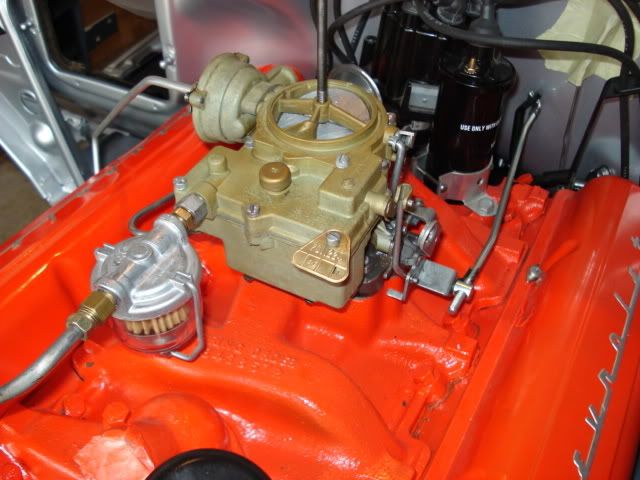



We were lucky that the "as found" condition of Mabel included some degree of brakes. This was very helpful in rollong her on and off the trailer to get her home, as well as a test drive when we got her running. When we got around to pulling the wheels and having a look we found the braking we had was all in the rear. The front brakes were shot. Everything right down to the wheel bearings were in pretty sad condition.
The back brakes only needed a cleaning and some adjustment. We even have the E-brake working (to some extent). The fronts were a different matter. I ground off the rivets holding the drums to the hubs, and bought new hubs. I converted her wheel bearings from ball type bearings to modern tapered roller bearings, pressed in the outer races, packed and installed the inner bearing, and pressed in new grease seals.
I stripped off the old front brakes and backing plate. It was a good opportunity to clean and inspect the steering linkage, which was not bad. The fittings are now all taking grease. I cleaned all the hardware, including a paint job on the backing plates. It all went together nicely (minimal swearing) with new wheel cylinders, hoses, shoes, some springs & clips, drums, bearings and seals. Some new fluid and a bleeding and we have good pedal! Brakes are a GOOD thing.
I had the tires dismounted from the wheels. 3 out of the 4 were the original (drum brake style). The 4th was a more modern wheel capable of fitting in a disk brake. I found an original style wheel and a used tire in a boneyard for $20. The odd rim will become the spare. The four tires that came on the car are in pretty decent shape but no prize. They will do for now. I cleaned, polished, and painted the rims and will get the tires mounted and balanced as soon as the paint cures.

